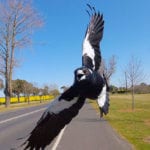 Music
Music  Music
Music  History
History 10 Less Than Jolly Events That Occurred on December 25
 Weird Stuff
Weird Stuff 10 Funny Ways That Researchers Overthink Christmas
 Politics
Politics 10 Political Scandals That Sent Crowds Into the Streets
 Weird Stuff
Weird Stuff Ten Bizarre Facts About The Doge Meme
 Our World
Our World 10 Ways Your Christmas Tree Is More Lit Than You Think
 Movies and TV
Movies and TV The 10 Coolest Stars to Set Sail on The Love Boat
 History
History 10 Things You Didn’t Know About the American National Anthem
 Technology
Technology Top 10 Everyday Tech Buzzwords That Hide a Darker Past
 Humans
Humans 10 Everyday Human Behaviors That Are Actually Survival Instincts
 Music
Music 10 Surprising Origin Stories of Your Favorite Holiday Songs
 History
History 10 Less Than Jolly Events That Occurred on December 25
 Weird Stuff
Weird Stuff 10 Funny Ways That Researchers Overthink Christmas
Who's Behind Listverse?

Jamie Frater
Head Editor
Jamie founded Listverse due to an insatiable desire to share fascinating, obscure, and bizarre facts. He has been a guest speaker on numerous national radio and television stations and is a five time published author.
More About Us Politics
Politics 10 Political Scandals That Sent Crowds Into the Streets
 Weird Stuff
Weird Stuff Ten Bizarre Facts About The Doge Meme
 Our World
Our World 10 Ways Your Christmas Tree Is More Lit Than You Think
 Movies and TV
Movies and TV The 10 Coolest Stars to Set Sail on The Love Boat
 History
History 10 Things You Didn’t Know About the American National Anthem
 Technology
Technology Top 10 Everyday Tech Buzzwords That Hide a Darker Past
 Humans
Humans 10 Everyday Human Behaviors That Are Actually Survival Instincts
10 Prehistoric Bugs That Could Seriously Mess You Up
Almost everybody is scared of spiders—but the common reassurance is that spiders are also scared of you. There’s nothing quite like the feeling induced by an unseen insect scurrying across your arm or by a little centipede worming its way out of your shoe.
But what if that centipede were three feet long? Hundreds of millions of years ago, monsters like these were everywhere. Here are a few of the most horrifying prehistoric bugs ever to walk—or should I say crawl—the earth.

Anomalocaris canadensis looked like a strange blend of squid and shrimp. It was three feet (1.0 m) long, with a mouth full of razor-sharp teeth. Fossils found in China show a massive undersea arthropod that lived about 500 million years ago. It probably fed on smaller crustaceans using its bizarre and deadly set of teeth, which resembled an enormous serrated cigar cutter. Its powerful mandibles were used to catch large prey.[1]

At more than two feet (60 cm) in length, Isotelus rex is the largest species of trilobite yet known—scavenging the ocean floor during the Paleozoic Era nearly 500 million years ago. It strongly resembled a very large horseshoe crab, with a thick armored shell, multiple body segments, and compound eyes. Isotelus rex and other trilobites were rather simple and adaptable organisms, managing to survive for some 300 million years.[2]
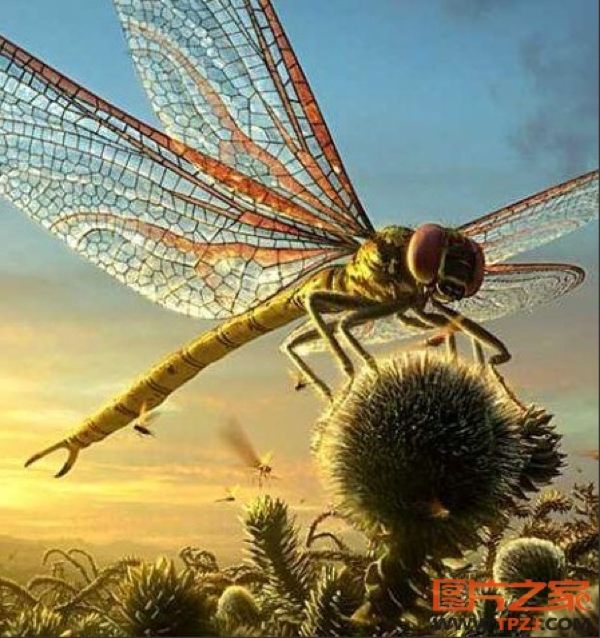
Modern-day dragonflies seem to have an unduly ferocious name, but their enormous ancestor, M. permiana would have deserved the name “dragon.” Although technically not related to the dragonflies we know today, they were most associated with a species of “griffinflies”—but close enough! It was probably the largest insect that ever lived: its wingspan could exceed two feet (60cm), and its body grew to nearly 17 inches (40 cm). This insect’s name was Meganeuropsis, and its immense size has led researchers to think that it may have fed on animals as large as frogs and squirrels to sustain itself. The prehistoric dragons are thought to have gone extinct when the earth’s atmosphere started to lose its high oxygen levels millions of years ago. And that’s good news for us.[3]

Today’s largest snail is the giant African land snail, which can reach seven inches (18 cm) in length, and has a shell diameter of three-and-a-half inches (9 cm). Fairly large—for a snail. But now consider that the prehistoric C. giganteum, thought to be one of the largest (if not the largest) snails ever, could reach nearly two feet (60 cm) in length. The name was a giveaway, really. Paleontologists believe it lived in the oceans that covered France during the Eocene epoch 50 million years ago—and we can only imagine what sort of terror it might have inflicted upon the Spongebobs and Squidwards of that age.[4]

Jaekelopterus rhenaniae fossils were first discovered in Germany in 2007. We now know that the creature was a truly monstrous sea scorpion, reaching eight feet (2.4 m) in length. In fact, a single one of its pincers was more than 18 inches (46 cm) long. A scorpion the size of a crocodile was certainly a predator to be reckoned with; it prowled the seas until the Permian extinction 250 million years ago.[5]

Pulmonoscorpius kirktonensis was another species of scorpion—this time making its home on land. It is thought to have reached over two feet (60 cm) in length. It thrived during the Devonian period around 400 million years ago and probably ate smaller arthropods and insects, though its sting would have been powerful enough to kill certain animals.[6]
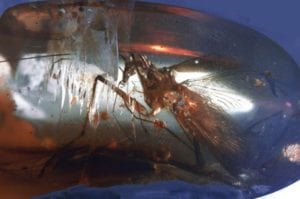
Manipulator modificaputis was a little Cretaceous critter, a predatory cockroach that possessed a range of characteristics, making it look like an insect chimera. It likely stalked the forest floor, most probably in the dead of night around 97 million years ago. At about 1 cm in length, it’s not going to break any records for size. Still, with its triangular-shaped head, elongated legs, and mouthparts, it would have been a formidable hunter of other nocturnal Arthropods. The fossilized remains of this insect, a new species, were found in a piece of amber collected from a mine in Noije Bum, northern Myanmar (Burma). It had a narrow body resembling that of an extant Crane fly, graceful wings, and it grasped prey using its modified front legs that were covered in short, strong spines.[7]
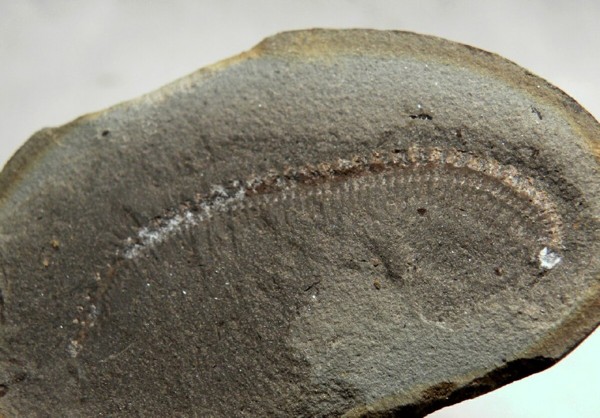
Euphoberia tracta was much like the modern centipede in shape and behavior, but with the distinction of being over three feet long. Fossil accounts of these beasts have been found across Europe and North America. Scientists aren’t exactly sure of its diet. But even the modern giant centipede, which only reaches about ten inches (25 cm) in length, can prey on birds, snakes, and bats. Imagine the kind of prey a three-foot-long version could bring down.[8]
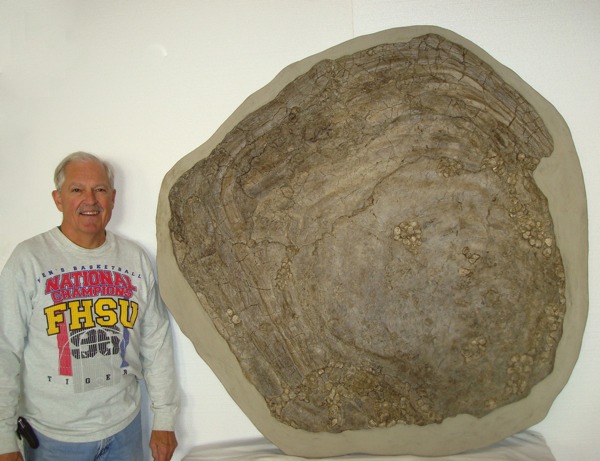
Platyceramus was not really a bug, but its length of ten feet (3 m) more than makes up for the technicalities. P. platinus is one of the largest bivalves (clams, scallops) ever found. In comparison to the (itself enormous) modern giant clam, P. platinus would have been more than two-and-a-half times as wide, and probably much heavier.[9]

Arthropleura was an ancestor to centipedes and millipedes. It could reach more than eight feet (2.4 m) in length, and the fatter creatures could be several feet wide—think, for a moment, of something like that brushing up against your leg. Despite being an invertebrate, it was so massive that it probably had very few predators, and it is by far the largest invertebrate species ever unearthed.
Arthropleura lived from the Carboniferous to the early Permian period—throughout what is now North America and Scotland—around 300 million years ago. Strangely, even though its monstrous form would have allowed it to prey on almost anything, Arthropleura was entirely herbivorous (as shown by the fossilized remnants of its stomach). It wouldn’t have taken any magic to resize this bug for James’s giant peach.[10]
Cam is an unreasonably poor high school student who freelances to support his nasty candy-eating habit. If you want to praise him/send him some money, you can find him on Facebook here.

